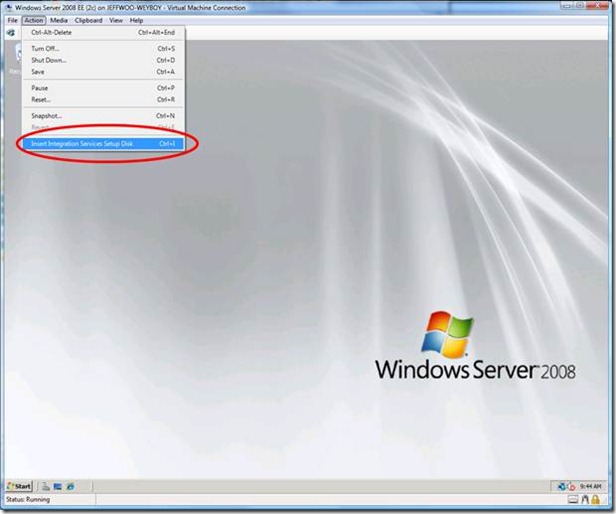Guidance on updating Service Pack 1 for Hyper V Dynamic Memory and remote FX
I have been getting lots of questions from customers and partners about what are the guidance on updating Service Pack 1 for Server 2008 R2 to enable Dynamic Memory and Remote FX for Virtual Machines on Hyper V.
I have been discussing them verbally and now we have a official guidance released by Virtualization product team. so here i am conveying the message.
There are three steps and you should perform them in this order:
- Ensure Virtual Machines are ready for the update
- Update the Host
- Update the Guest Integration Services
Step 1: Ensure Virtual Machines are ready for the update. Completely shut down (not save state) your virtual machine and merge snapshots. Saved States are not compatible between different Hyper-V versions.
Step 2: Update the host. Install Service Pack 1 on the parent partition. Restart when prompted.
Step 3: Update the Guest Integration Services
1. VMs running Windows 7 and Windows Server 2008 R2: Update the guest operating system with SP1. Updating the guest OS with Service Pack 1 will, in turn upgrade the Integration Services
2. VMs not running Windows 7 SP1/Server 2008 R2 SP1: (e.g. Windows XP/Vista/7 RTM/2000/2003/2008/2008 R2 RTM) For other operating systems you will need to upgrade their Integration Services. To do so:
- a. Start the virtual machine connect to the virtual machine and go to the Action Menu
- b. Select the bottom menu option Insert Integration Services Setup Disk. You will then be prompted to run the Integration Services Setup. Do so and Restart when prompted.
For more information on Dynamic Memory available in Service Pack 1 Beta, I would strongly recommend you to read the following blog posts on Microsoft Virtualization Team Blog.
- Part 1: Dynamic Memory announcement. This blog announces the new Hyper-V Dynamic Memory in Hyper-V R2 SP1. It also discussed the explicit requirements that we received from our customers. Click Here
- Part 2: Capacity Planning from a Memory Standpoint. This blog discusses the difficulties behind the deceptively simple question, “how much memory does this workload require?” Examines what issues our customers face with regard to memory capacity planning and why. Click Here
- Part 3: Page Sharing. A deep dive into the importance of the TLB, large memory pages, how page sharing works, SuperFetch and more. If you’re looking for the reasons why we haven’t invested in Page Sharing this is the blog. Click Here
- Part 4: Page Sharing Follow-Up. Questions answered about Page Sharing and ASLR and other factors to its efficacy. Click Here
- Part 5: Second Level Paging. What it is, why you really want to avoid this in a virtualized environment and the performance impact it can have. Click Here
- Part 6: Hyper-V Dynamic Memory. What it is, what each of the per virtual machine settings do in depth and how this all ties together with our customer requirements. Click Here
I hope it helps and as always do send your feedbacks and comments.
Cheers ![]()
